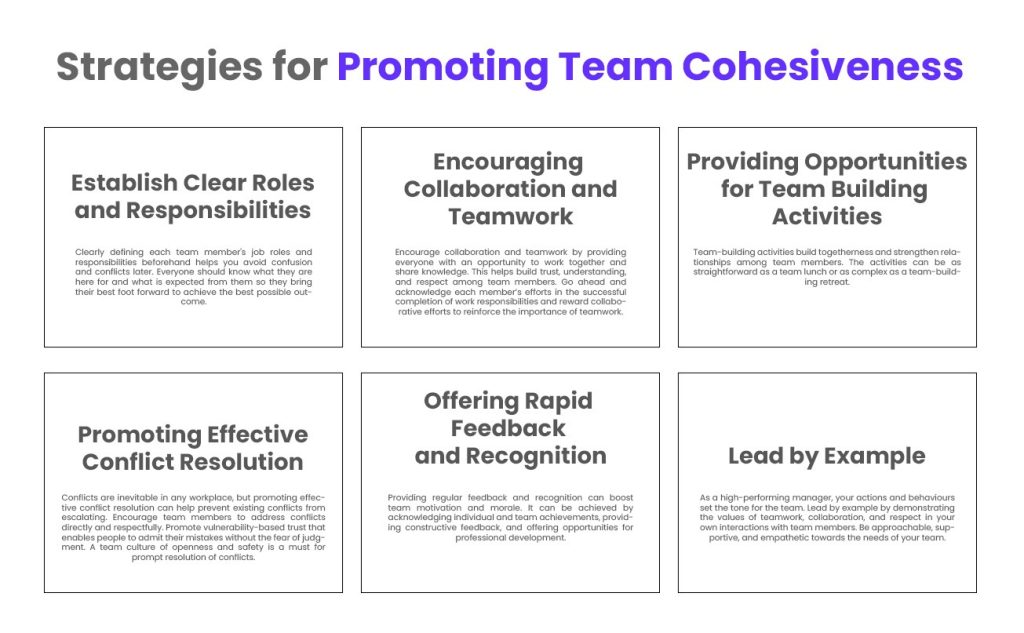
One of the biggest hurdles that managers face is team cohesiveness. It is also the first discipline for building a healthy organisation. The creation of a cohesive leadership team results in an increase in productivity by 25%.
Henry Ford rightly said that coming together is a beginning and working together is a success. In this blog, we discuss the concept of team cohesiveness in detail – factors influencing it and strategies to nurture team cohesiveness in the workplace.
What is Team Cohesiveness in the Workplace?
Team cohesiveness is the art of working together towards a common goal. It is the ability of several individuals to work together as a team on a defined set of goals and objectives.
In all forms of organisation, people in charge must be behaviourally cohesive – all of them understand their jobs, know how to embrace their strengths and commit to the overall team goals. The level of connectedness really drives team members to achieve that common organisational goal.
Team cohesion is critical for productivity and success in the workplace, as 75% of people value workplace collaboration as an important factor.
Understanding the Factors Influencing Team Cohesiveness
The importance of team cohesiveness can be understood from its cruciality in achieving organisational success. Several factors can influence team cohesiveness, including communication, trust, shared goals, and a positive work environment. When team members feel connected, motivated, and aligned, they are better able to collaborate effectively and achieve their shared goals.
1. Clear and Open Communication
If the smartest people in your organisation are put together in a team, they won’t make a high-performing team without the ability to communicate with ease.
Effective communication is therefore essential for building team cohesiveness. Team members should be encouraged to communicate openly & honestly, and actively listen to each other’s ideas and concerns. It helps build trust and understanding among team members.
2. Trust and Respect
Trust is another critical component of high-impact teams. Team members should feel comfortable relying on each other, especially during times of uncertainty and change. You can achieve this by promoting relationship-building and demonstrating reliability and accountability.
3. A Common Purpose
Shared goals are an essential aspect of a cohesive team environment. They are the unifying force of a team. When team members clearly understand their shared objectives, they are more likely to work together effectively and support each other in achieving those goals.
4. Positive Work Culture
Finally, a positive work environment can help you nurture team cohesiveness. This includes creating a culture of respect, recognition, and support, besides providing opportunities for team members to socialise and build relationships outside work. Engaging your people in team-building activities, social events, and bonding exercises further strengthens those relationships and promotes team cohesiveness.
Strategies for Promoting Team Cohesiveness
While team cohesiveness is simply the ability to work together, implementing and building a cohesive team takes the actual role.
Here are some of the strategies to promote team cohesiveness and get the desired result for your organisation:
1. Establish Clear Roles and Responsibilities

Clearly defining each team member’s job roles and responsibilities beforehand helps you avoid confusion and conflicts later. Everyone should know what they are here for and what is expected from them so they bring their best foot forward to achieve the best possible outcome.
2. Encouraging Collaboration and Teamwork
Encourage collaboration and teamwork by providing everyone with an opportunity to work together and share knowledge. This helps build trust, understanding, and respect among team members. Go ahead and acknowledge each member’s efforts in the successful completion of work responsibilities and reward collaborative efforts to reinforce the importance of teamwork.
3. Providing Opportunities for Team Building Activities
Team-building activities build togetherness and strengthen relationships among team members. The activities can be as straightforward as a team lunch or as complex as a team-building retreat.
4. Promoting Effective Conflict Resolution
Conflicts are inevitable in any workplace, but promoting effective conflict resolution can help prevent existing conflicts from escalating. Encourage team members to address conflicts directly and respectfully. Promote vulnerability-based trust that enables people to admit their mistakes without the fear of judgment. A team culture of openness and safety is a must for prompt resolution of conflicts.
5. Offering Rapid Feedback and Recognition
Providing regular feedback and recognition can boost team motivation and morale. It can be achieved by acknowledging individual and team achievements, providing constructive feedback, and offering opportunities for professional development.
6. Lead by Example
As a high-performing manager, your actions and behaviours set the tone for the team. Lead by example by demonstrating the values of teamwork, collaboration, and respect in your own interactions with team members. Be approachable, supportive, and empathetic towards the needs of your team.
Conclusion
Achieving team cohesiveness in the workplace can be challenging, but it’s an essential factor that leads to an organisation’s success. When the teams are cohesive, employees are more productive and stay in the organisation longer. All people really desire is to be seen, heard and respected. When they are understood, a sense of connection and belongingness gets built, boosting them to collaborate with colleagues and bring their best to work.
So, implement the strategies shared above to nurture cohesiveness in your workplace every day.
Follow me on LinkedIn
Frequently Asked Questions
1. How to build team cohesiveness?
To build team cohesiveness, managers must focus on clear communication, fostering trust and encouraging collaboration. Organise team-building activities and address conflicts constructively to strengthen bonds among team members.
2. What are some of the characteristics of a cohesive and effective agile team?
Some characteristics of a cohesive and effective agile team include:
1. Collaboration: Cohesive team members actively collaborate and communicate with each other to achieve common goals.
2. Adaptability: The team is flexible enough to quickly respond to changes and new establishments.
3. Empowerment: Team members are empowered to make decisions and take ownership of their work.
4. Transparency: There is transparency in processes, progress, and decision-making within the team.
5. Accountability: Each team member holds themselves and others accountable for their commitments and contributions.
3. What are the five behaviours of a cohesive team?
The five behaviours of a cohesive team are:
1. Trust: Team members trust each other, allowing for open communication, vulnerability, and the ability to rely on each other without fear of judgment.
2. Conflict Resolution: Healthy conflict is embraced, where team members are unafraid to engage in passionate discussions, share diverse points of view, and challenge ideas to reach the best possible solutions.
3. Commitment: Team members commit to collective decisions and goals, ensuring alignment and dedication to achieving shared objectives.
4. Accountability: Each team member holds themselves and others accountable for their responsibilities and performance, fostering a sense of ownership and reliability within the team.
5. Results Orientation: The team prioritises collective results over individual success, focusing on achieving outcomes that benefit the entire team and organisation.



